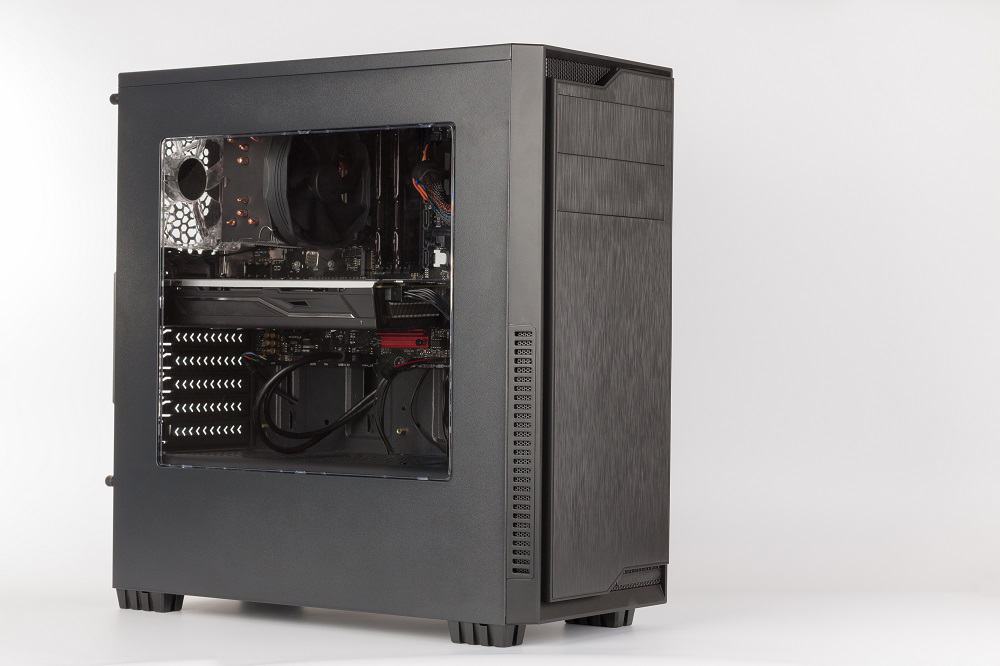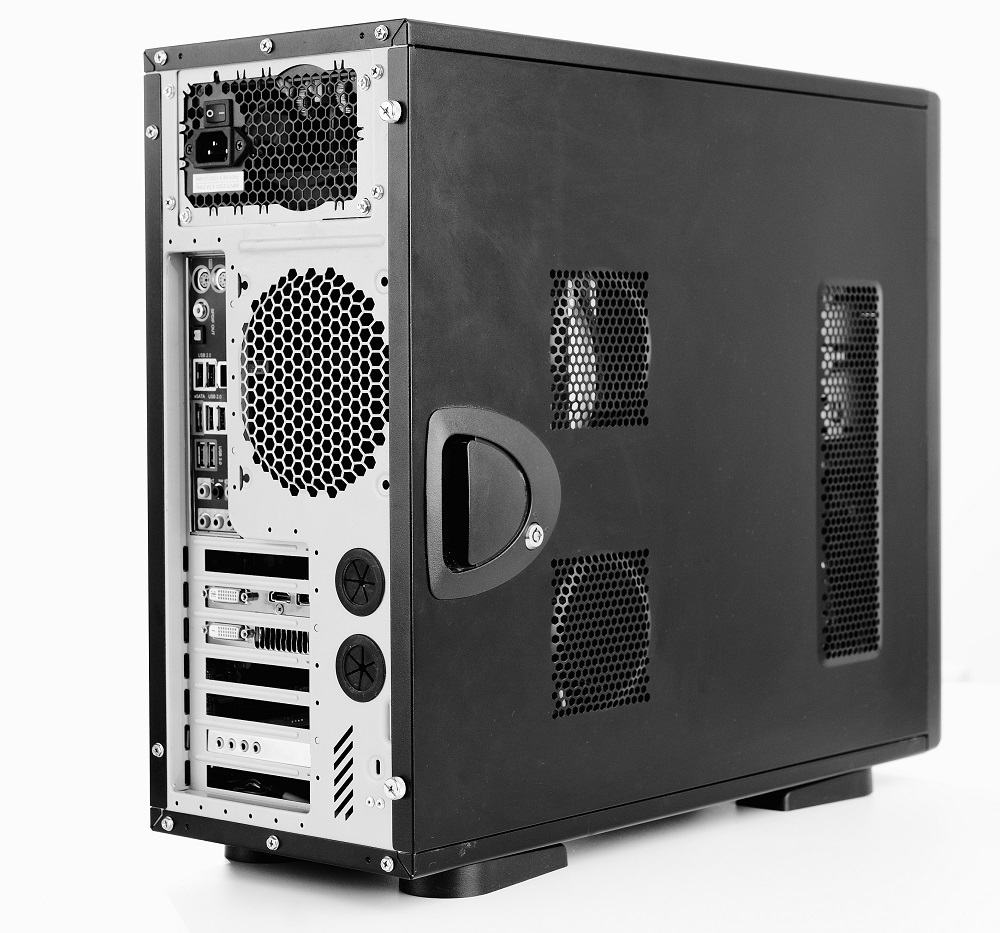When building your PC, you need to consider the type of case you purchase for your build. While choosing a PC case might seem trivial, it is an important consideration in your PC build. For instance, the case you choose may determine the motherboard's size, airflow levels, water-cooling support, noise output, cable management, and even lighting that your rig eventually gets. In some ways, your choice of PC case will influence your computer's aesthetics and restrict or support the performance of your computer.
It is with the above consideration that most people weigh between a mid-tower and full tower chassis. While the full tower is the full-blown PC case capable of housing a home server, mid-tower cases are the smaller but more popular form-factor for custom PC builds.
What is a Mid-Tower Case?

In many regards, the mid-tower case is the standard form factor for consumer PCs. These cases average 18″ high, 18" long, and 8" wide in size, which is sufficient room to house the standard ATX motherboards (the most popular motherboard size) and the full range of micro-ATX and mini-ITX motherboards.
Depending on the model you purchase, you also get better cable management from a mid-tower case due to the case's compact size. You do not have long capable running inside the case. Additionally, most mid-tower cases are designed to make cable management easy and neat.
On the pricing front, mid-tower cases are cheaper than full tower cases and do not compromise performance. After all, you can fit a couple of high-end video graphics cards, and you are left with adequate space remaining for storage drives. For most users, the 2 GPUs and up to 6 slots for storage drives found in mid-tower cases are sufficient for their use case. Such a system will support almost all hobby gaming and typical office work.
What is a Full Tower Case?

A full tower case is a PC chassis with a size ranging from 20" to 27" long and 20" to 27" high. This massive case is designed and built to accommodate the larger motherboards, such as the extended-ATX (E-ATX) motherboards. Additionally, the ample internal space supports the installation and housing of more graphic cards and expansion slots than a mid-tower can handle.
On the price front, full tower cases are the most expensive cases you can purchase. Their size and the premium build of most full tower PC chassis make these cases expensive, sometimes to the tune of hundreds of dollars.
Generally, a full tower case can support a computer build meant to perform heavy tasks, including video editing, a digital audio workstation, heavy gaming (such as 4K gaming), or even using the computer as a home server. It is also the ideal PC chassis if you plan to expand your rig over time.
Motherboard Support
A mid-tower case can accommodate the standard ATX motherboards, microATX, and mini-ITX. If you are looking to house an E-ATX board, EE-ATX, or an XL-ATX, you will need a full tower case.
Expansion Slots Support
The innards of mid-tower cases allow the case to accommodate anywhere from 7 to 9 PCI-E expansion slots. This is enough space for 3 to 6 drive bays for SSD or HDD storage drives and up to 2 graphics cards.
However, it is important to note that some PC cases designed with enhanced airflow as a core characteristic will accommodate fewer PCI-E expansion slots as standard. To support more expansion slots, one needs to install additional expansion brackets. Additionally, some PC cases come with an optical drive from the factory. While an optical drive used to a popular feature, it's increasingly being purged out of more PC cases.
Full tower cases can support more PCI-E expansion slots, ranging from 10 to 15 internal and external slots owing to their sheer size. As such, you can fit more than 10 SSDs or HDDs if you need massive amounts of storage. Additionally, a full tower case can accommodate 3 to 4 GPUs, which comes in handy for heavy gaming, video editing, 3D rendering, and other demanding tasks.
Disk Drive Support
The space accorded by a mid-tower case can accommodate up to 6 more SSDs and HDDs. On the other hand, full towers can accommodate from 10 to 15 SSDs and HDDs or more.
CPU Cooler Support
Mid-tower PC cases typically accommodate 120 to 140-millimeter fans. However, there are mid-tower chassis designs that can accommodate up to 200 mm fans for enhanced cooling. The vast majority of mid-tower cases can fit a 360 mm radiator.
The compact innards of a mid-tower case make it easy for the fans to supply ample airflow to all parts of the case. As such, mid-tower cases are renowned for having efficient airflow with little to no hot spots. Typically, the CPU and the GPU never exceed 70 °C to 80 °C. Even though the mid-tower cases have fewer fans compared to full tower cases.
Conversely, full tower cases, with their spacious innards, prove difficult to keep cool with normal cooling solutions. A typical cooling solution might keep the mid-section of the tower case cool, but the fans might not produce sufficient airflow to keep all corners cool. Consequently, it is common for hot spots to plague full tower cases with a limited number of fans, especially around corners and edges. That's why most full tower cases use 6 to 12 fans.
The larger size of a full tower offers more area to fit more fans. For instance, most full tower PC chassis can fit anywhere between 10 and 15 fans. The larger full tower case can also fit a larger radiator – 420 mm and more radiators.
That said, both full tower and mid-tower can fit closed-looped cooling systems.
Conclusion
Generally speaking, the use case for full tower cases is to build powerful rigs using large motherboards and a 3 or 4 way GPU configuration. Full tower cases are also appropriate for building PCs with large amounts of disk space. Full tower cases also accord users with space sufficient for installing advanced water loops, which is necessary when you perform heavy-duty computing.
On the other hand, mid-tower cases are used for housing standard ATX motherboards with 1 or 2 GPUs. With a mid-tower case, you can build a modern PC, right from a budget rig to a decent gaming PC.
Consider your usage needs when purchasing a computer case for your rig, keeping in mind the different characteristics of these two cases. If you need a compact computer you can stuff under your office desk for typical computing, a mid-tower case might suit you best. Conversely, if your goal is to build a high-powered computer that does not compromise on any aspect of performance, a full tower case is better suited to meet your needs.

